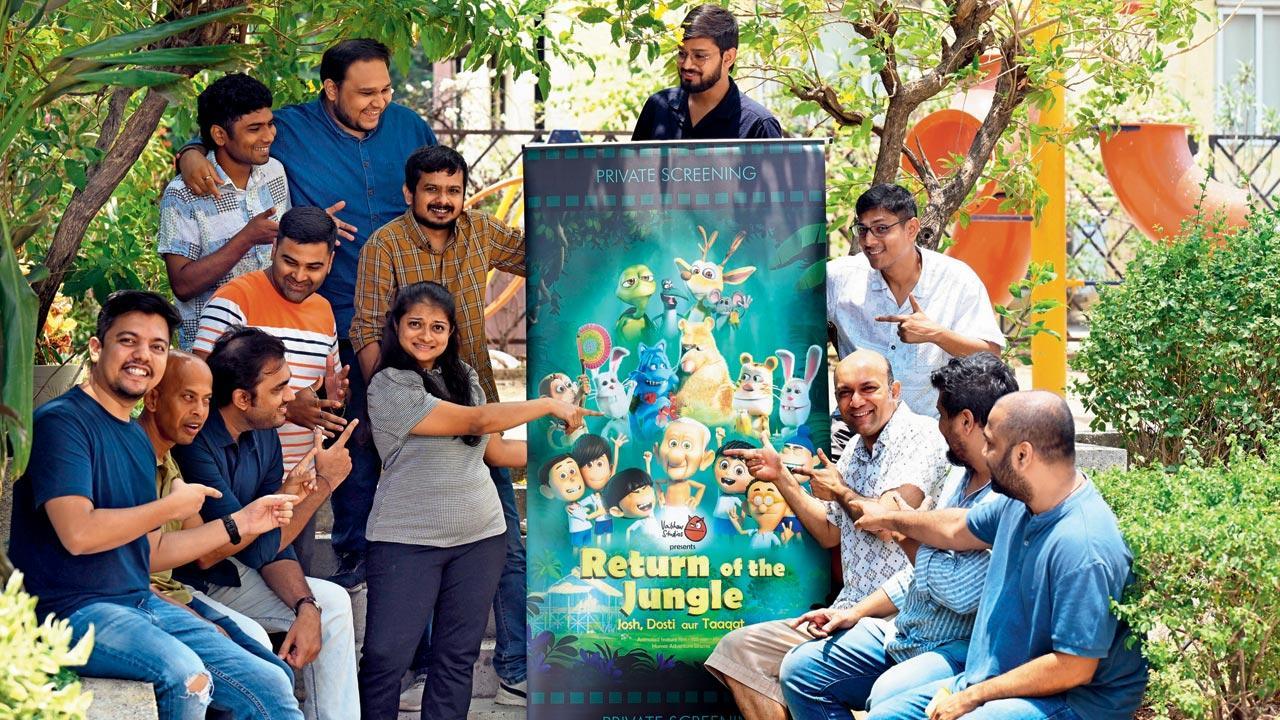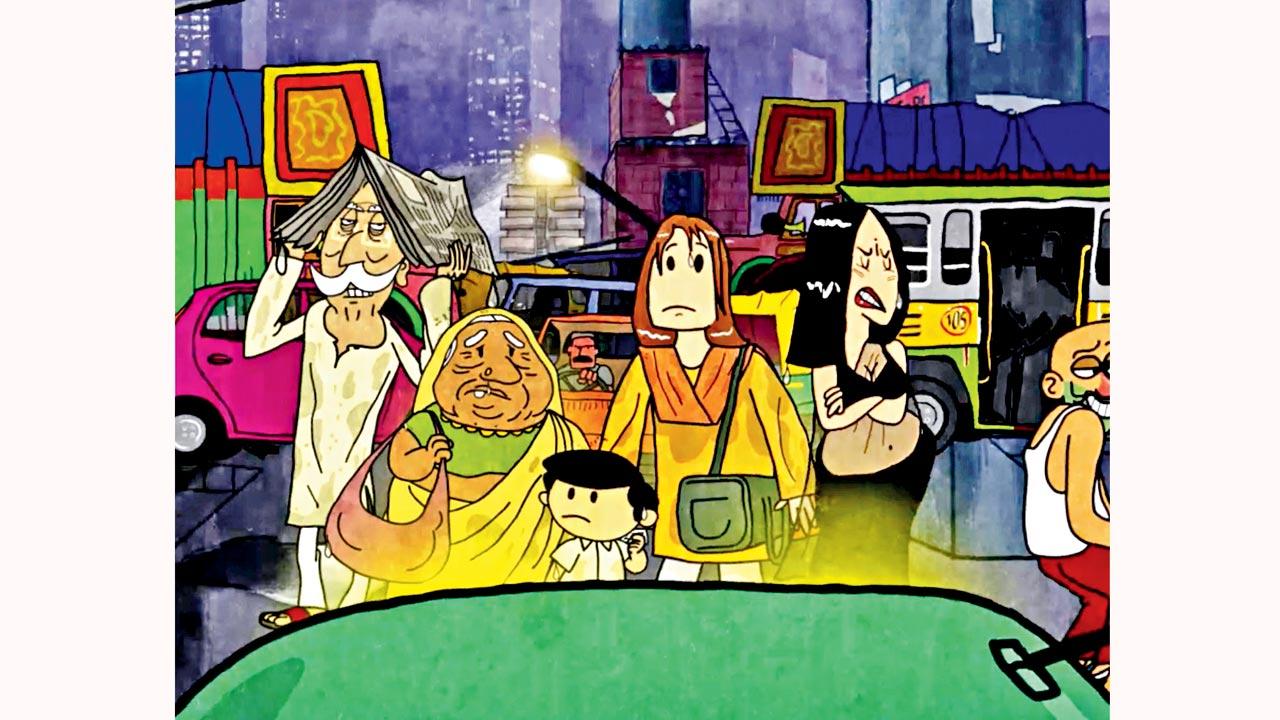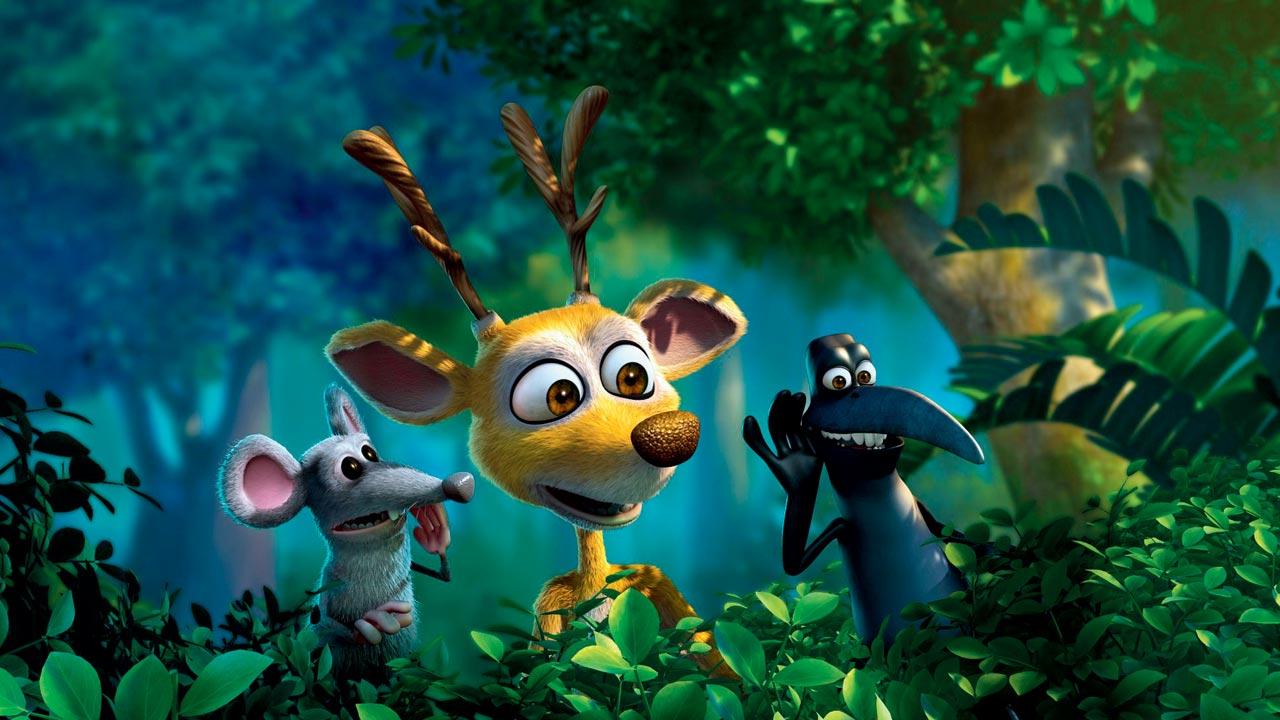Trailblazing Indian independent animation is making waves at film festivals globally. The animator’s efforts to nurture and celebrate indigenous stories seems to be paying off

Vaibhav Kumaresh, animator and founder of Vaibhav Studios, with his team. Pic/Sameer Markande
Last year, Ranjit Singh—Tony to his friends and colleagues—the Chief Creative Producer (Projects & Strategy) at Vaibhav Studios found himself running after Shri Apurva Chandra, ex-Secretary of the Ministry of Information and Broadcasting at CII Summit FX. A global summit on animation, visual effects, gaming, comics and immersive media where government officials were in attendance to discuss industry policy. And that’s where Singh chased Mr Chandra to hand him a brochure about their upcoming project, Return of the Jungle.
Impressed by the story, they were advised to enter the film at the International Film Festival of India. Their debut feature inaugurated the animation vertical at the festival and went on to win the New York International Film Award and the ONIROS Film Award. An indigenous effort, the film is deeply rooted in cultural values. “It’s a wholesome, inspiring movie about children and their problems. We think a lot of people would resonate with the story.” Vaibhav Kumaresh, Founder and Creative Director of Vaibhav Studios, tells mid-day. He wasn’t wrong; it struck a chord with a large audience, indeed. This week, it was screened at the Marché du Films at Cannes—one of the only five films to be selected by the National Film Development Corporation.
 Aapki Poojita by Bakarmax Studios is an under-production comedy adult animation about a former child actor named Poojita, who still believes she’s in her Doordarshan show as a grown woman. Pic Courtesy/Bakarmax
Aapki Poojita by Bakarmax Studios is an under-production comedy adult animation about a former child actor named Poojita, who still believes she’s in her Doordarshan show as a grown woman. Pic Courtesy/Bakarmax
“Return of the Jungle is our attempt to change the narrative about Indian animation.” Singh asserts. He adds, “The work here is mostly commercial. And India is an outsourcing hub. You see a lot of production work being done here, but the visualisation and ideation are being done elsewhere.”
He recalls what Ram Mohan, a veteran Indian animator, also hailed as the Father of Indian Animation, used to say: “Animation is the Cinderella of Indian cinema.” Much like the titular fairy tale character, animation is a neglected stepchild of filmmaking. There’s a dearth of original content. But storytellers, much like Kumaresh and his team, are attempting to change that.
 A still from “Return of the Jungle”. The subject matter of the film his drawn from Kumaresh’s own childhood. Pic Courtesy/Vaibhav Studios
A still from “Return of the Jungle”. The subject matter of the film his drawn from Kumaresh’s own childhood. Pic Courtesy/Vaibhav Studios
Ecosystems of grants, festivals, and residencies create the environment needed to hone talent in animation. If a project is not a mass entertainer, artists turn to these places to receive support. Adheep Das, the director of a Hindi animated short, Chandraheen (Moonless), which went to the International Leipzig Festival for Documentary and Animated Film in 2023, reiterated that making independent animation is far from easy. “In today’s world, there’s an Excel sheet for data about everything. And the Excel sheet right now says not a lot of people are interested in animation, which is why people struggle to find funding for their projects.”
But when has that stopped artists? Return of the Jungle was completely self-financed by Vaibhav Studios, using the capital from their advertising gigs. Sumit Kumar and his team at Bakarmax’s dedication to creating India’s first adult animation show led them to crowdfund to start the production of their show. “Producers almost have a fetish for big names being cast in the projects they undertake. A part of the reason why animation doesn’t get that much attention from platforms is because when you see an animation, you see the character, not the actor.” Kumar tells us. Bakarmax is now hoping to land a deal with media platforms to finish their project.
Relentless efforts to get their stories heard are made by students as well. Toash Bhat, a design school drop-out and self-taught animator, along with his partner, Mazhar Kothari, initially used Kickstarter, a major crowdfunding app, to finish what started as the latter’s graduation project. While Kickstarter doesn’t operate in India due to government policies, the duo found a loophole. “We made an Indian e-commerce store and gave rewards in the form of products to people for their monetary support,” Bhat says. Their film, FOUR/SIX-C, was screened at Harkat Studios.
Swati Agarwal, animation designer and assistant professor at the IDC School of Design, tells mid-day, “Although there are only a limited number of good animation schools in India, there’s a repository of online resources to equip you with the knowledge and skills that you need. I find people from different disciplines, like engineering, coming into this field, and there’s international recognition. The issue is that the film community is very small, but we see the community taking steps to encourage larger participation. AniMela is one such space.”
Most up-and-coming animators and students from institutes like IDC and NID find themselves between gigs. Many end up picking up corporate jobs along with freelancing on the side. Rahul Dileep, the animator and director for the film, The Mundu and the Malayali, which travelled to four festivals, left a career in engineering to pursue visual design. “I worked at a corporation for a year but ultimately took up animation. It’s a scary place to be, but nothing is more satisfying than telling these stories.”
 Subscribe today by clicking the link and stay updated with the latest news!" Click here!
Subscribe today by clicking the link and stay updated with the latest news!" Click here!








